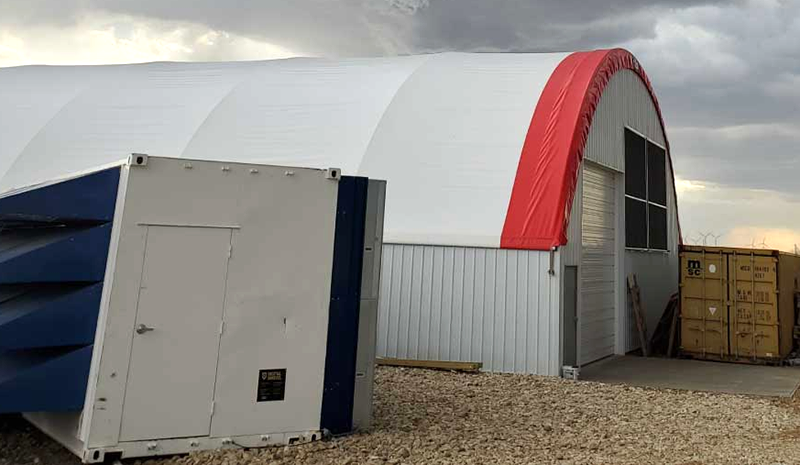Digital Currency Miners Lead 21st Century Gold

Cryptocurrency entrepreneurs, or 21st century digital miners, are moving to rural America for the lower-cost energy they need to power hundreds of computers 24/7 year-round.
Much of cryptocurrency’s growing popularity has come from the industry’s ability to offer a high rate of return on its investment. The overall cryptocurrency market capitalization reached more than $3 trillion in November 2021 according to Statista. The two largest cryptocurrencies, bitcoin and ethereum, recorded five-year returns of around 3,200 to 6,800 percent, respectively, according to Yahoo Finance.
Cryptocurrency enthusiasts are not the only people investing in this asset class. Some investment portfolios managed by a financial institution may have cryptocurrencies as an investment option. According to The Wall Street Journal, institutional clients traded $1.14 trillion worth of cryptocurrencies on exchange Coinbase Global Inc. in 2021, up from $120 billion in 2020.
“How could the growing popularity of cryptocurrencies pose challenges for electric cooperatives?” CFC Analyst Chris Whittle asked. “It’s because the mining process requires large amounts of electricity 24/7. For each cryptocurrency transaction, miners use high-powered computers to solve complex equations required to verify each transaction.”
Miners verify and encrypt all the transactions on the network in real time. The validated transactions are added to a digital ledger known as a blockchain. These mining computers consume a lot of electricity during this process. Over time, the equations get more complex, requiring more energy to solve.
The average power consumption from one bitcoin transaction, as of March 2022, is 2,258.49 kilowatt-hours (kWh). For comparison, 100,000 VISA transactions consume only 148.63 kWh according to Statista. The Cambridge Center for Alternative Finance reports the total bitcoin network consumed an estimated 11.33 terawatt-hours (TWh) of electricity for the month of March. The bitcoin network would rank as the 23rd highest energy consumer by country, and may consume over 200 TWh this year according to Digiconomist.
Miners Select Their Locations Based on Electric Rates
Miners primarily decide to base their operations in areas with the lowest electric rates. Around 70 percent of bitcoin mining in the United States takes place in four states: Texas, New York, Georgia and Kentucky.
In 2020, Texas, Georgia and Kentucky all had average electricity rates lower than the national average. Texas and Kentucky have averages on the low side of the spectrum at 8.36 and 8.58 cents/kWh respectively. For New York, even though it had high 2020 average rates, 14.87 cents/kWh, the state’s municipals and cooperatives are able to purchase preference power from the New York Power Authority at lower rates according to the U.S. Energy Information Administration.
 Source: MiningStore
Source: MiningStore
“This is one reason why cooperatives have become popular electricity suppliers for miners,” Whittle said. “Another reason is that cooperatives are able to issue lower-cost debt through tax-free bonds. In general, these mining projects want low-cost energy and infrastructure, with less regulatory scrutiny, which they have been able to find through partnering with electric cooperatives.”
Cryptocurrency Mining Brings Risks and Potential Benefits
For electric cooperatives, cryptocurrency mining brings significant risks, but also the potential for benefits to a system. Mining operations provide cooperatives with an opportunity to grow their load, including during off-peak hours, given the 24-hour-a-day demand. These types of projects can add a significant load factor to systems, which can help cooperatives be more financially stable and cost efficient on a per-kWh basis.
While the benefits associated with cryptocurrency mines are substantial, there are also significant risks. One major risk is the potential of stranded assets. Many smaller cryptocurrency mining projects are mobile, often working out of trailers that can easily move to different locations. The mining operators do not want to pay for line extensions, fortifying power lines or other connection/construction costs. This would force cooperatives to carry the cost of those stranded assets. Another concern with the mobility of cryptocurrency mines is that they could also drive up the cost of wholesale power and then change locations, leaving the cooperative with a bigger bill for up to a year afterward.
The strong working relationship between Iowa-based Grundy Rural Electric Cooperative and MiningStore, a cryptocurrency mining company that operates in Grundy REC’s service territory, is an example of when both parties work together and understand each other’s business. MiningStore has agreed to take action to ensure the operational and financial well-being of Grundy REC.
Grundy REC gave MiningStore access to its real-time load data. This enables the mine to power down certain sections, or all, of the mine to ensure that Grundy REC does not operate at peak.
“MiningStore staff noted that their clients, who pay to host their servers, do not like to power down their machines,” Whittle said. “MiningStore’s largest cost, and largest factor of production, is energy. The miners are willing to work with Grundy REC to ensure they have a good relationship with their electric cooperative.”